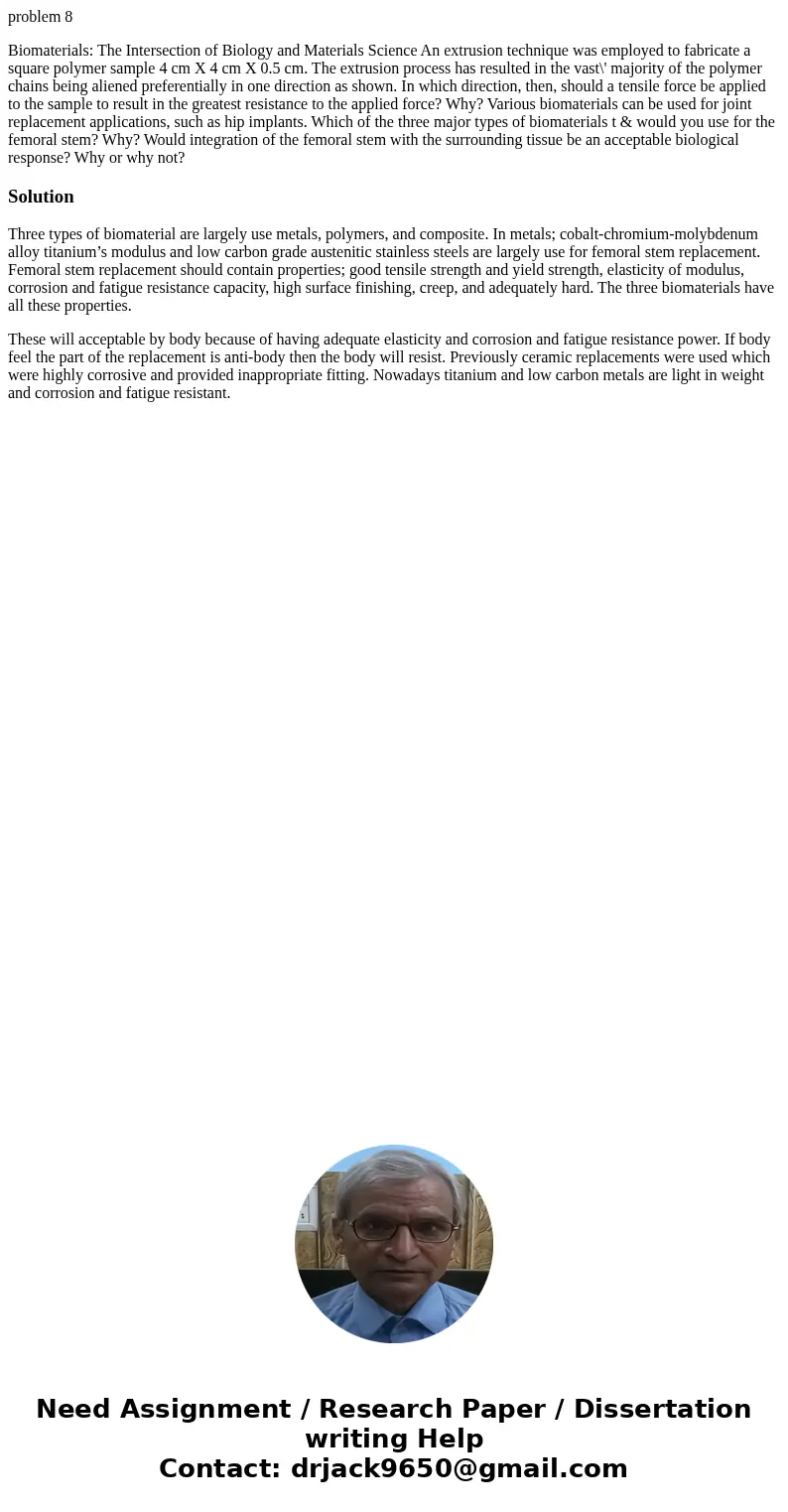problem 8 Biomaterials The Intersection of Biology and Mater
problem 8
Biomaterials: The Intersection of Biology and Materials Science An extrusion technique was employed to fabricate a square polymer sample 4 cm X 4 cm X 0.5 cm. The extrusion process has resulted in the vast\' majority of the polymer chains being aliened preferentially in one direction as shown. In which direction, then, should a tensile force be applied to the sample to result in the greatest resistance to the applied force? Why? Various biomaterials can be used for joint replacement applications, such as hip implants. Which of the three major types of biomaterials t & would you use for the femoral stem? Why? Would integration of the femoral stem with the surrounding tissue be an acceptable biological response? Why or why not?Solution
Three types of biomaterial are largely use metals, polymers, and composite. In metals; cobalt-chromium-molybdenum alloy titanium’s modulus and low carbon grade austenitic stainless steels are largely use for femoral stem replacement. Femoral stem replacement should contain properties; good tensile strength and yield strength, elasticity of modulus, corrosion and fatigue resistance capacity, high surface finishing, creep, and adequately hard. The three biomaterials have all these properties.
These will acceptable by body because of having adequate elasticity and corrosion and fatigue resistance power. If body feel the part of the replacement is anti-body then the body will resist. Previously ceramic replacements were used which were highly corrosive and provided inappropriate fitting. Nowadays titanium and low carbon metals are light in weight and corrosion and fatigue resistant.

 Homework Sourse
Homework Sourse